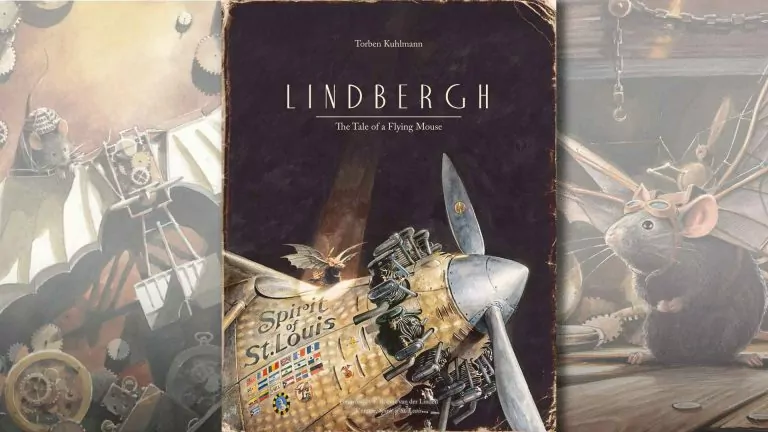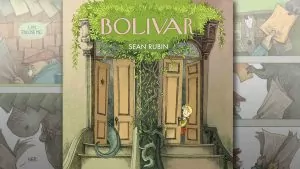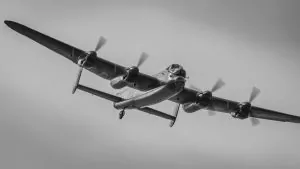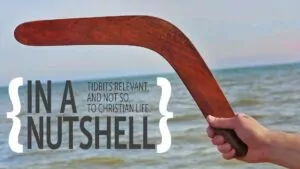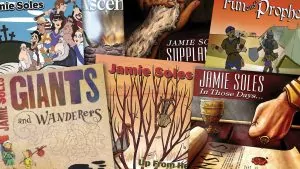by Torben Kuhlmann
96 pages / 2014
How did man first learn to fly? It seems we had a little help. This is the story of a little mouse who made the very first transatlantic flight, back when Charles Lindbergh was but a lad.
As our story begins we learn what first motivated this mouse to seek the skies. In the late 1800s, another invention was becoming quite popular – the mousetrap! – which had this furry inventor seeking somewhere safer to live. Where could he go? Why not America, a place that welcomed immigrants of all sorts (whether man or mouse)? That was a good destination, but when he tried boarding a boat, he barely escaped the harbor cats. They were guarding the docks, and there was no getting past them. It was there, however, as the little mouse was hiding in the shadows, that he was “struck” by inspiration:
“Suddenly wings flapped against his face! Ghostly creatures flew through the dark. They looked like mice, with tiny eyes and huge ears. But they flew with powerful black wings. The little mouse carefully studied the strange flying relatives, then scurried home…”
Why not try flying to America using wings like bats! In the many pages that follow we see the mouse draft plans, secure supplies, evade owls, fail, try again, fail once more, and then finally make his way into the skies.
What makes the book so special is the enormous, gorgeous, detailed pictures. I want to make the case that this should be shelved in the graphic novel section of the library, even though it isn’t what most would think of as a graphic novel. There are no word bubbles, but there are whole sections where the story is told entirely by sequential pictures. It might be accurately called a picture book, but that makes it seem like it’s for little children (what older kids read picture books?).
This is not a children’s story. That’s in small part because it has a grim bit here and there – one mouse is depicted in a newspaper picture as clearly dead, caught in a mousetrap, which would be an unexpected jolt to readers in the lowest grades. It might also be too tense with the owls determined not simply to frustrate his flight, but to eat our little inventor. The bigger reason this is older fare is simply the length and depth of the story. The mouse draws schematics that deserve to be closely examined – there are echoes here of Leonardo da Vinci. And he is playing a cat and mouse game on a few levels, not simply with cats, but owls, and people too. So, yes, this visual feast belongs best in the graphic novel section where boys in Grades 4 and up will discover it and love it!
Caution
The only caution, other than age appropriateness due to the aforementioned grim bits, would concern not this book, but a sequel in the author’s “Mouse Adventures” series.
In the next book, Armstrong (2016), another mouse takes things even further, developing the first ever rocket to the moon so he can prove that it is not made of green cheese. It’s another inventive story, and the only nit I have to pick comes afterward, in an appendix of sorts. There we’re told that Galileo Galilei “contradicted the Church’s view at the time and his work was banned while he found himself accused of heresy.” This is true, but without context, it contributes to the popular idea of Science as the ultimate authority, especially over and above what the Church teaches from the Bible. What this overlooks is that the Church’s problem here was its reliance on faulty science in the first place – Aristotilean science – rather than the Bible. Most kids aren’t likely to even ingest this section of the book. But this particular lie is a pernicious one, used as a universal solvent to undermine clear biblical teachings on origins, sexuality and gender. While it’s only a small mention of a potent lie, it is also delivered to a young audience, which is why I’d give this one a skip for a school library.
I’d also skip on Einstein (2020), not because of specific problems, but because there were parts of this picture book/graphic novel that as an adult, I didn’t even understand. I think this one was too ambitious, considering the target audience.
Conclusion
That said, this story is the very pinnacle of creative genius. It will teach children at least a little about what it took to first developed powered flight, providing as fun and wonderfully illustrated an introduction to the topic as you’ll find. For more, take a look at the book’s trailer below.
And if your child enjoys this one, they’ll likely also love the third book, Edison: the Mystery of the Missing Mouse Treasure (2018) in which a mouse invents underwater travel to recover the illuminating invention his ancestor created.







